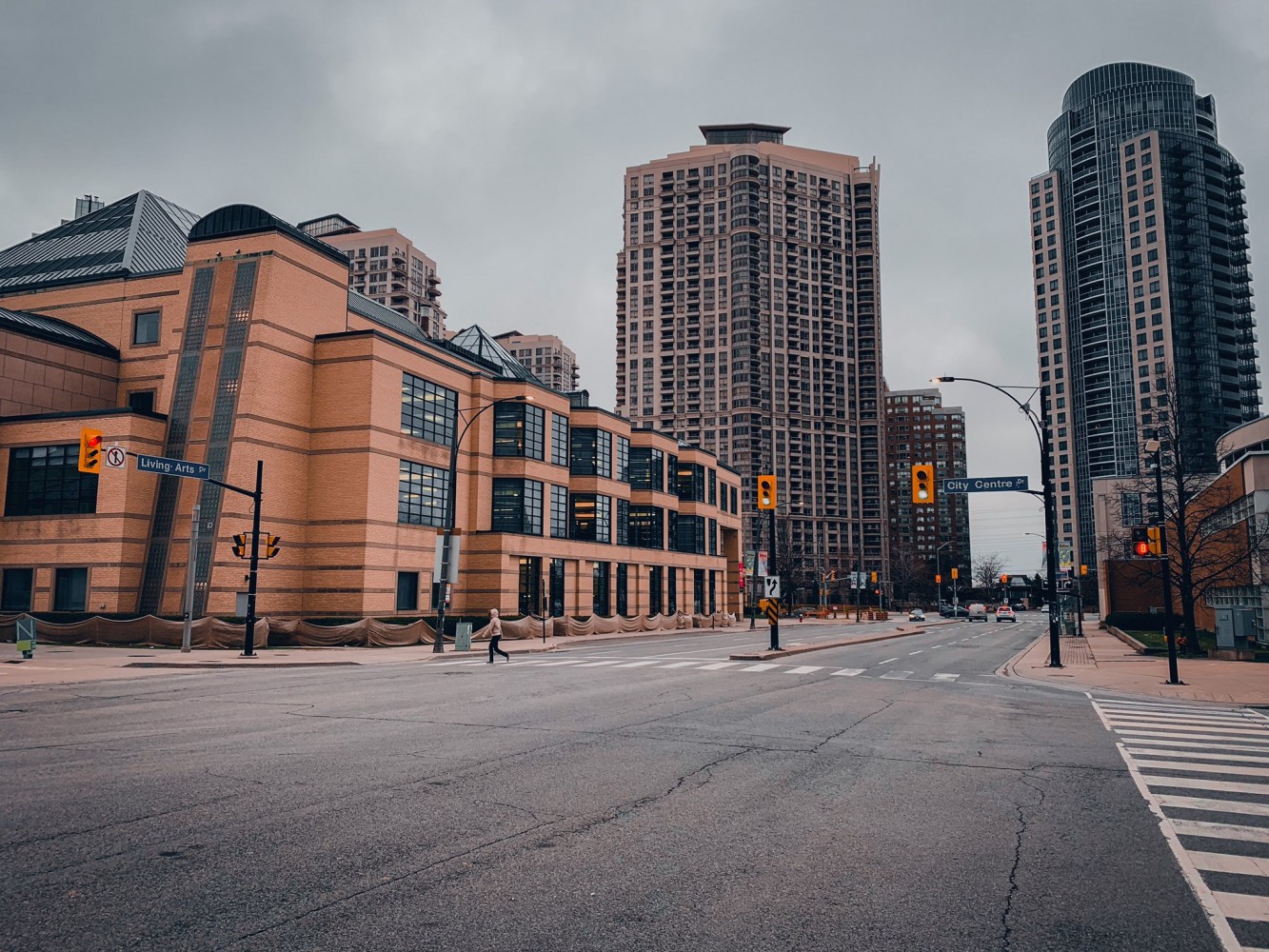
Ontario should mimic international examples of how to stop the spread of COVID-19 before it’s too late
When the world is seized by a global pandemic, data becomes king. Localized numbers of confirmed COVID-19 cases tick upward at a rate that represents how fast the novel coronavirus is spreading, demonstrating how effective containment efforts by all levels of government have been.
Our World In Data — an organization that aims to make statistics and research on the planet's most pressing issues accessible and understandable — has a COVID-19 dashboard. “Only on the basis of clearly presented and well-documented data can governments, organizations and individuals hope to respond appropriately to the COVID-19 pandemic,” reads the dashboard, put together by researchers, including those from post-secondary institutions like the University of Oxford and the University of Edinburgh.
“During a disease outbreak it is the growth rate [of both cases and deaths] that deserves attention,” the dashboard continues.
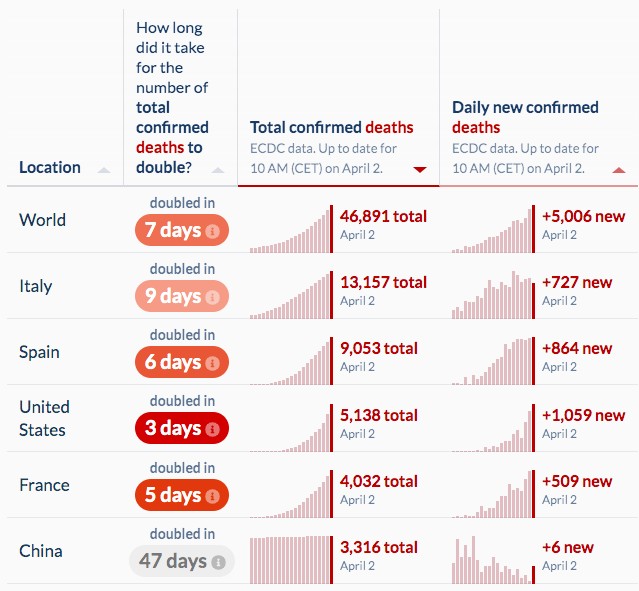
A table from Our World In Data shows how long it has taken for the number of deaths to double in each country it has data for.
In Spain, cases grew exponentially in a short matter of time. On Feb. 5, the country had just one confirmed case. Just over a month later, on March 9, that number grew to 589, spiking to 1,024 the next day. On March 14, Spain announced a shutdown to slow the spread of COVID-19. By March 28, there were 64,059 confirmed cases, jumping to 102,136 Thursday. Now, Spain has the third highest number of cases in the world, according to the World Health Organization.
In Madrid, the worst hit city in Spain, an ice rink has been turned into a temporary morgue to house the influx of dead bodies of those who have died from COVID-19. There’s a time when spread of the novel coronavirus reaches a tipping point and can no longer be contained. If governments do not act fast enough, people can unknowingly become infected and spread the virus to others.

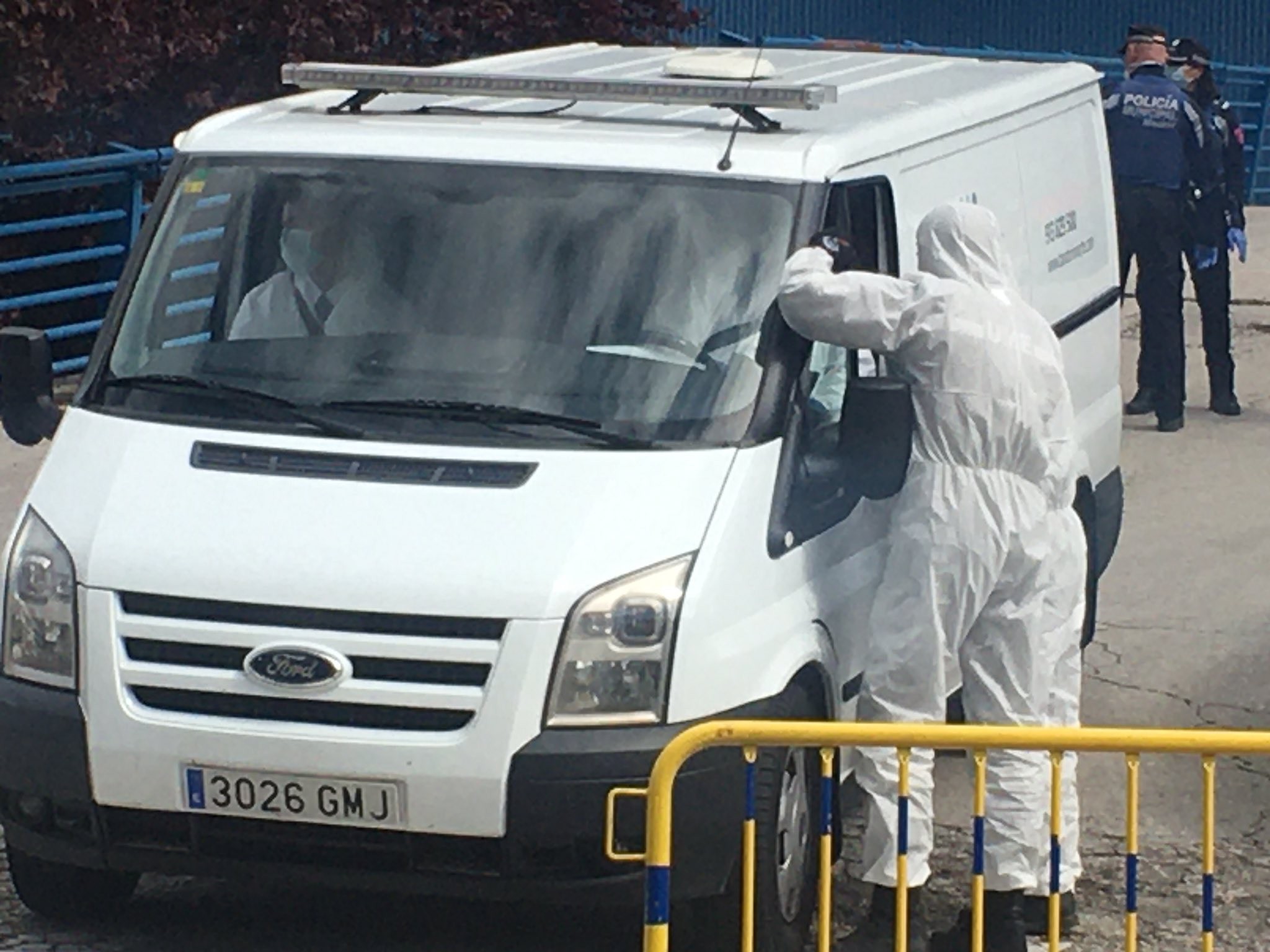
In Madrid, Spain's worst hit city, an ice rink called 'Palacio del Hielo' in a shopping mall has become a temporary morgue to house the dead.
According to the Centers for Disease Control and Prevention (CDC), symptoms of the virus, which include fever, coughing and shortness of breath, may take two to 14 days to appear. People may not always be able to differentiate between symptoms of the novel coronavirus and the flu, which include fever, headache and chills, in turn discouraging them from being tested for COVID-19.
Ontario hasn’t seen cases accelerate as fast as they have in Spain, which doesn’t mean extraordinary measures shouldn’t be taken to flatten the curve of infection in the meantime. On March 1, cases in Ontario stood at just 15, rising to 1,706 on March 31. As of Thursday morning, there were 2,793 confirmed cases in the province.
Last month, Peel saw a similar growth pattern, with the first case confirmed in the region on March 6, rising to 216 by March 31. Healthcare systems in the Region of Peel were reeling prior to the COVID-19 pandemic, begging the question of how they can possibly keep up with a rate of infection that rises everyday, bringing with it more patients and dwindling resources.
According to Trillium Health Partners (THP), the healthcare network responsible for operating Mississauga’s hospitals, 229 people have tested positive for COVID-19 in its hospitals and 22 are currently being treated for the novel coronavirus. THP operates Credit Valley Hospital and Mississauga Hospital, alongside Queensway Health Centre in Toronto. On Tuesday, Credit Valley declared a COVID-19 outbreak after four patients in a single unit tested positive for the contagious virus. No information on where those who have tested positive for COVID-19 are currently being treated has been made available by the healthcare system.

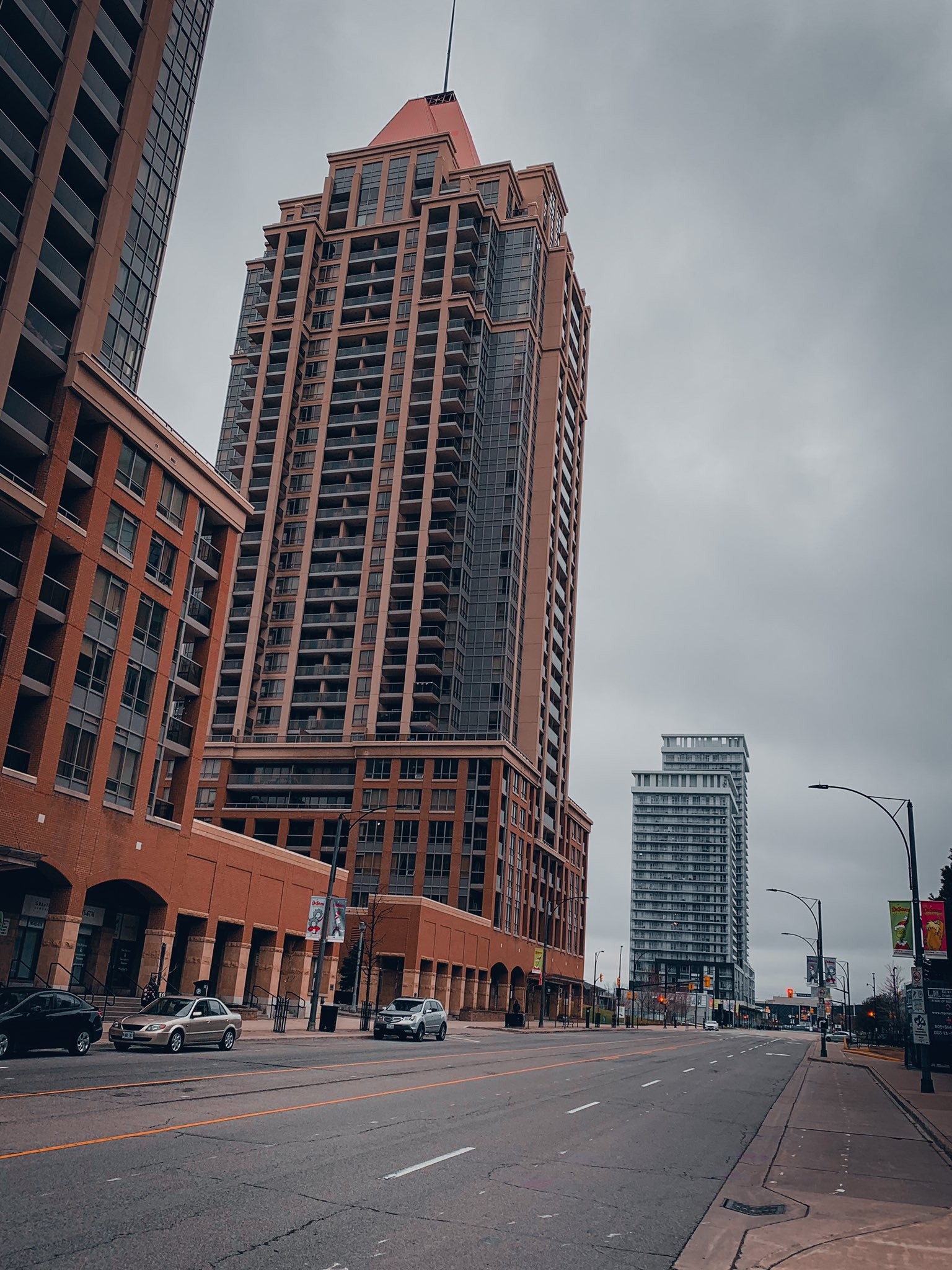
The usually busy downtown streets of Mississauga are empty as people stay home and practice physical distancing.
According to Cailin Rodgers, director of communications for THP, the foundation has 1,538 beds across its three facilities, 100 of which are critical care beds. Rodgers says, by closing the urgent care centre at Queensway Health Centre, alongside other measures, the healthcare system has freed up 650 more beds. As well, THP will add 32 extra “critical care spaces” at its hospitals in Mississauga.
William Osler Health System, which operates Brampton Civic Hospital and Peel Memorial Health Centre in Brampton and Etobicoke General Hospital in Toronto, has had 280 people test positive for COVID-19 in its facilities, with 19 currently being treated in-hospital, as of Thursday. Information on where patients are being treated for the novel coronavirus at present has not been made available.
According to a press release from Peel Public Health, a man in his 70s, who had underlying health issues, passed away at Brampton Civic Hospital, the first death related to COVID-19 in the region. The individual tested positive for the novel coronavirus on March 25 and died the next day.
Osler has made headlines for years because of its hallway healthcare crisis. At the end of January, increasingly dire circumstances at Brampton Civic and Peel Memorial caused the city to declare a healthcare emergency. In 2019, Brampton Civic operated between 101 percent and 106 percent capacity, far over the recommended 85 percent, according to information obtained through a Freedom of Information request by the provincial NDP. Meanwhile, Peel Memorial was operating at 557 percent capacity the same year, which rose to 587 between April and June.
With Brampton Civic continuously treating more people than it can handle, patients end up in hallways waiting for a bed. In 2018, 3,035 patients were treated in the hallways of Brampton Civic. As the city’s only full-service hospital, Brampton Civic currently has 635 beds funded by the province, while Peel Memorial has no outpatient beds. The city has less than one bed for every 1,000 residents, with the provincial average sitting at 2.3 hospital beds for every 1,000 residents.
On top of all this, Brampton Civic only has 24 ICU beds and 10 Intermediate Care Units. While Brampton Civic has confirmed it is increasing the number of bed and treatment spaces it has, specific figures are not available. The Pointer reached out to Osler for more details but did not receive a response ahead of publication.
While Mississauga doesn’t have the same level of hallway healthcare, its hospital wait times are amongst the worst in the province. In its 2019-29 plan, THP issued its own cry for help, describing its current setup as “under-resourced for the size and needs of the community,” adding that no hospital network in Ontario will receive more demand for acute services across the next two decades. The provincial standard for patients to be admitted from the emergency room is eight hours, a standard that is met for 33 percent of patients. For THP, the average time is 21.2 hours at Mississauga Hospital, even longer than Brampton Civic, ranking it 100 out of 113 hospitals included in the data. Only eight hospitals have worse averages than 105th placed Credit Valley Hospital, where patients wait for an average of 23.7 hours.
In Wuhan, the capital of China’s Hubei province, where the outbreak of COVID-19 began, the city, with a population of 11 million, enacted a complete lockdown on Jan. 23. There were 375 cases in the province at that time. On the same day, the City of Huanggang, also in Hubei, suspended bus services, rail services and entertainment activities. By rapidly responding with widespread shutdowns, China was able to slow down the spread of the novel coronavirus.
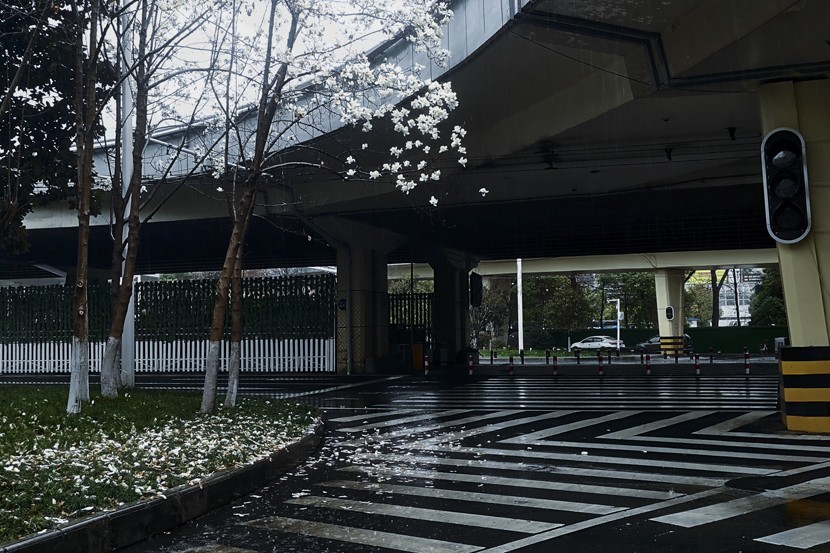
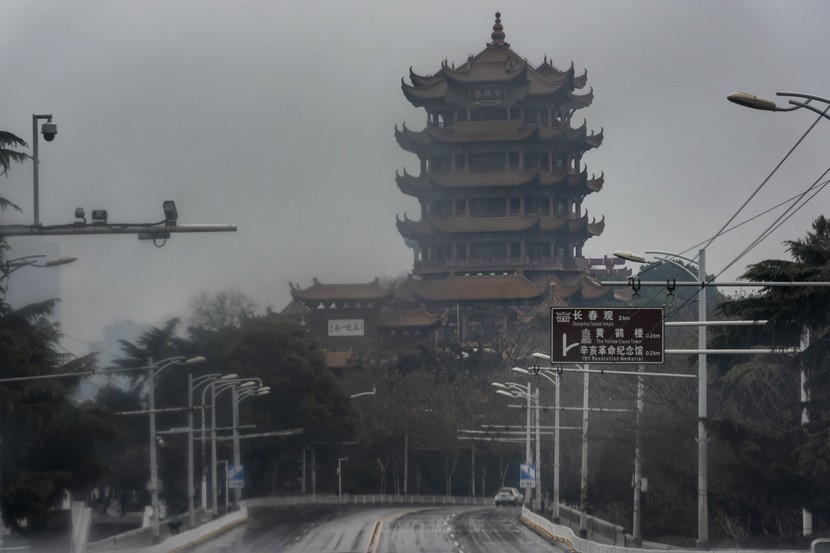
Early, widespread shutdowns in Wuhan, China helped stop the spread of COVID-19.
With a complete shutdown of Wuhan, China slowed the spread of COVID-19 by 2.91 days, in turn delaying its growth rate in other cities across the country, according to researchers from Beijing Normal University, the University of Oxford and the University of California, Davis, amongst others. “The national emergency response delayed the growth and limited the size of the COVID-19 epidemic and, by 19 February (day 50), had averted hundreds of thousands of cases across China,” the paper states.
The novel coronavirus spreads between people who are in close contact with each other (less than six feet apart) and from droplets produced when an infected person coughs or sneezes, according to the CDC.
Confirmed cases in Hubei continued to grow after restrictions on cities were imposed. On Jan. 23, there were only 375 cases in the province, a figure that rose to 19,665 only two weeks later, the reported maximum amount of time it takes for symptoms to appear.
Restrictions implemented on public activity in Hubei were far more severe than those recently imposed by Ontario. For example, Ontario has not suspended train services, something Hubei did immediately.
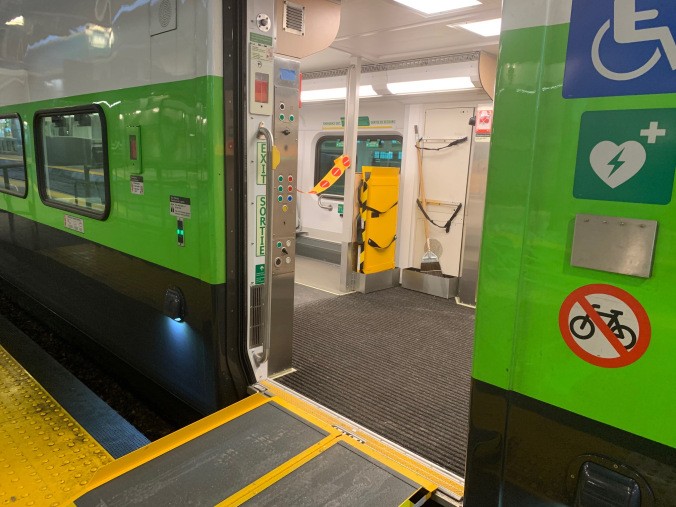

GO Transit has placed velcro straps in the accessbility coach on trains to create a safe distance between customers and staff.
GO Transit and Via Rail, two rail transit providers with routes across the province, have implemented their own measures to contain the spread of COVID-19. These include “health checks” and reduced service hours, as trains continue to run. Transportation is deemed an essential service in Ontario, as it is a necessity for daily living, according to the province.
“Reducing our service allows us to rotate our employees on our vehicles and in our stations. We know our transit is a lifeline service for many customers during these difficult times and we want to ensure we have a healthy workforce so there is a reliable and sustainable plan for service during the weeks to come,” Metrolinx stated in a press release on its website.
Back in Hubei, restrictions enacted in January are beginning to be lifted as the rate of infection appears to have tapered off. On March 11, daily reported confirmed cases in Wuhan were under 20 for five days straight with zero reported cases in other cities for seven days straight, according to the Health Commission of Hubei Province.
With evidence showing that early, widespread shutdowns helped stop the spread of COVID-19 in China’s Hubei province, The Pointer reached out to Peel Public Health to inquire about what further measures it thinks the province should take to flatten the curve of infection, but did not receive a response ahead of publication.
On March 30, Ontario announced the extension of its emergency declaration, which called for the closure of all non-essential workplaces. A further measure, made possible by the Emergency Management and Civil Protection Act, closed all outdoor recreational areas, including playgrounds, beaches and off-leash dog parks, across the province. Before the announcement, many people continued to partake in outdoor activities, causing frustration for Brampton Mayor Patrick Brown and Mississauga Mayor Bonnie Crombie.
Email: [email protected]
Twitter: @nida_zafar
Tel: 416-890-7643
COVID-19 is impacting all Canadians. At a time when vital public information is needed by everyone, The Pointer has taken down our paywall on all stories relating to the pandemic to ensure every resident of Brampton and Mississauga has access to the facts. For those who are able, we encourage you to consider a subscription. This will help us report on important public interest issues the community needs to know about now more than ever. You can register for a 30-day free trial HERE. Thereafter, The Pointer will charge $10 a month and you can cancel any time right on the website. Thank you.
Submit a correction about this story


